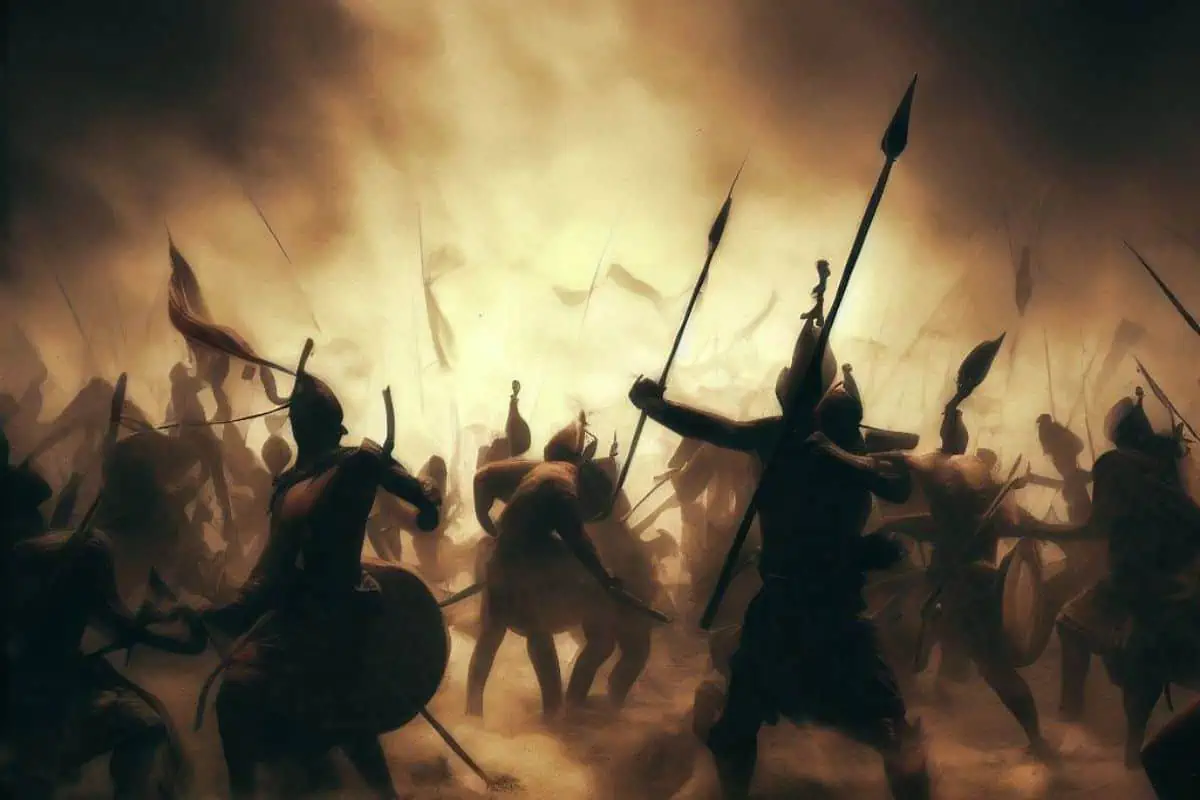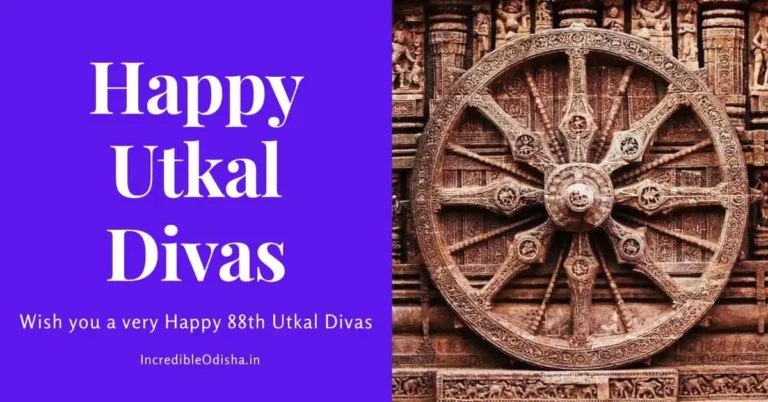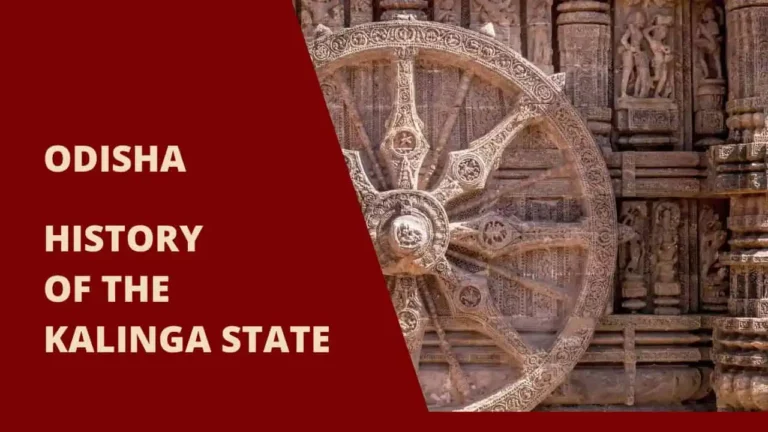The Kalinga War: A Pivotal Moment in Ancient Indian History
Imagine a time when the Indian subcontinent was a patchwork of kingdoms, each vying for supremacy and territorial control. It is within this tumultuous era that we encounter the mighty Mauryan Empire, led by the illustrious Emperor Ashoka. Though remembered as one of history’s most influential figures, it was the crucible of the Kalinga War that forever altered the course of his reign and, ultimately, his legacy.

The stage was set in the 3rd century BCE when Emperor Ashoka, driven by a relentless ambition, set his sights upon the independent state of Kalinga.
The strategic value of this prosperous region, situated on the eastern coast of present-day Odisha, was undeniable. However, what was meant to be another conquest would instead transform into an indelible turning point that would shape Ashoka’s very core.
In our quest to understand the intricacies of this momentous conflict, we shall delve into the multifaceted factors that ignited the flames of war.
From the aspirations for dominance to the intricate web of political intrigue, we will navigate through the historical landscape with precision, drawing upon ancient texts, archaeological findings, and scholarly insights to bring this enthralling narrative to life.
What transpired on the battlefield of Kalinga was not just a clash of swords and spears; it was a profound clash of ideals, morality, and the human conscience. The ferocity of the conflict left an indelible mark on Emperor Ashoka’s soul, awakening a profound transformation within him.
The Kalinga War became the crucible that birthed a benevolent ruler, renowned for his enduring commitment to peace and compassion.
In the forthcoming chapters of our exploration, we shall witness the aftermath of this transformative conflict and explore how Ashoka’s edicts, inscribed on pillars across his vast empire, echoed a powerful message of unity, tolerance, and ethical governance.
These principles, forged amidst the crucible of Kalinga, continue to resonate through the corridors of time, inspiring generations to strive for harmony and shared humanity.
Consider reading: History of Odisha
Unraveling the Tale of the Kalinga War
In the annals of ancient Indian history, there are few events that have been etched as deeply as the Kalinga War. A fierce and bloody conflict, it remains a stark testament to the transformative power of war and the unyielding resilience of humanity.
The Importance of Kalinga in Ancient India
Long before it became the battleground for one of the deadliest wars in history, Kalinga held a place of prominence in the ancient Indian subcontinent. Located on the eastern coast, it was a flourishing hub of culture and commerce, noted for its strategic position, robust maritime trade, and rich natural resources.
It’s political autonomy and economic prosperity were instrumental in defining its unique cultural identity. Kalinga held a distinct societal hierarchy, and its people were known for their courage and valor, a sentiment that would eventually shape the course of the Kalinga War.
Setting the Stage: India Before the War
To understand the Kalinga War, one must journey back to a time when the Indian subcontinent was a mosaic of kingdoms and tribes.
The Mauryan Empire, under the stewardship of the ambitious King Ashoka, was burgeoning in influence and territory. However, Kalinga remained a thorn in the empire’s side, remaining stubbornly independent amidst growing Mauryan influence.
This set the stage for a conflict that would forever change the trajectory of the region and its people.
The Key Figures: Unforgettable Characters in History
King Ashoka: The Mighty Mauryan Monarch
King Ashoka, also known as Ashoka the Great, was the third emperor of the Mauryan dynasty. A formidable strategist and a ruthless conqueror, Ashoka’s ambition knew no bounds.
King Ashoka’s early reign was characterized by military conquests and territorial expansion. But it was his transformation post the Kalinga War, from a ruthless monarch to a benevolent ruler, that marked him as one of history’s most memorable figures.
King Ashoka’s embrace of Buddhism and his advocacy for peace and compassion stand in stark contrast to his initial warmongering ways, rendering him a fascinating character in the historical narrative.
The Brave Kalinga Warriors: Defenders of Their Homeland
Faced with the might of the Mauryan Empire, the Kalinga warriors stood tall, armed with an unyielding spirit and undying love for their homeland.
These brave soldiers, renowned for their military tactics and guerilla warfare, offered stiff resistance to Ashoka’s forces, earning a place in the annals of history as fearless defenders of their territory. Their fierce resistance in the face of overwhelming odds remains a testament to their indomitable spirit.
The Unseen Heroes: Civilians in the Kalinga War
Often overlooked, the civilians of Kalinga were the unsung heroes of this war. Their sacrifices and struggles bore the true brunt of the war. It was their suffering that ultimately triggered Ashoka’s change of heart, leading him to abandon his conquests and adopt the path of Dharma.
Their fortitude and resilience serve as a poignant reminder of the human costs of war, an essential facet of the Kalinga War narrative.
Unveiling the Conflict: The Root Causes of the Kalinga War
Political Motivations: Expansion of the Mauryan Empire
The expansion of the Mauryan Empire was a primary driver for the Kalinga War. With his sights set on creating a pan-Indian empire, Ashoka sought to bring the independent state of Kalinga under Mauryan rule.
The political assertion of the Mauryan Empire, coupled with the persistent defiance of Kalinga, set the stage for an inevitable conflict, resulting in a bloody war.
Economic Factors: Kalinga’s Wealth and Trade
Beyond political motivations, the economic wealth of Kalinga played a significant role in sparking the war. Kalinga, being a coastal region, was a crucial trade hub with a booming economy. Its rich mineral resources and bustling ports were attractive prospects for the Mauryan Empire.
Therefore, gaining control of Kalinga would mean strengthening the empire’s economic base and asserting control over important trade routes, adding a significant layer of economic motivation to the political undertones of the war.
The War Unfolds: The Clash of Titans
The Kalinga War was more than just a conflict; it was a dramatic saga of power, courage, and resilience that altered the course of history.
Tactics and Strategies: The Art of Ancient Warfare
In this epic face-off, both sides exhibited an exceptional understanding of ancient warfare. Ashoka, with his formidable Mauryan army, employed his siege warfare expertise, using elephants and infantry to their full potential.
On the other hand, Kalinga’s soldiers, aware of their geographical advantage, used guerilla tactics to counter the invading forces. It was a grand display of military strategies, a chess match that demonstrated the profound knowledge of warcraft during this historical period.
The Fierce Battles: A Detailed Picture of the Conflict
As the war raged on, the battlefields of Kalinga witnessed scenes of valiant fighting and immense bloodshed. The Mauryan forces were relentless, but the Kalinga warriors fought with undying determination.
Despite the overwhelming odds, they resisted the invading forces, creating a vivid picture of heroism and defiance. The fierce battles were a testament to the indomitable spirit of the Kalinga people, a vital aspect of the historical narrative of this conflict.
The Toll of War: The Aftermath of Battle
Casualties and Destruction: The Dark Reality of War
The Kalinga War was a grim reminder of the devastating reality of warfare. The casualties were high, with thousands of soldiers and civilians losing their lives.
The destruction was widespread, painting a haunting picture of a region brought to its knees by the horrors of war. This dark reality was a stark contrast to the romantic notion of conquest, revealing the terrible cost of victory.
Impacts on Kalinga: The Price of Resistance
The aftermath of the Kalinga War changed the landscape of the region forever. Beyond the immediate physical destruction, the economic and social fabric of Kalinga was severely disrupted.
The society that once thrived was now left in ruins, and the economic prosperity was replaced by poverty and despair. However, the spirit of resistance lived on, reflected in the enduring history of the Kalinga people.
Ashoka’s Transformation: A King Turned Pacifist
The Emotional Toll: Ashoka’s Change of Heart
In the wake of the Kalinga War, King Ashoka underwent a profound transformation. The emotional toll of the war was immense, and the sight of widespread suffering and destruction moved Ashoka profoundly.
The once ruthless monarch began to question the ethics of his ambitions, leading to a change of heart that would shape his legacy.
Adoption of Buddhism: The Spiritual Journey of Ashoka
Ashoka’s transformation was not merely an emotional one, but also a spiritual awakening. Deeply affected by the horrors of war, he embraced Buddhism, seeking solace and guidance in its teachings of peace, compassion, and non-violence.
This newfound faith led him to advocate for Dharma, promoting harmony and understanding among his subjects. The spiritual journey of Ashoka, from a war-mongering king to a pacifist ruler, remains one of the most compelling narratives in the history of ancient India.
Beyond the Battlefield: The Greater Impact of the Kalinga War
The Kalinga War, while a pivotal event in itself, held profound implications that extended far beyond the boundaries of the battlefield. Its aftermath led to changes that would resonate through the corridors of time and alter the course of history.
The Edicts of Ashoka: Messages of Peace and Dharma
In the wake of his transformation, King Ashoka embarked on a path of peace and righteousness, disseminating his newfound beliefs through his famous edicts.
These inscriptions, carved on pillars and rocks throughout his empire, extolled the virtues of Dharma, advocating non-violence, respect for all life, and ethical conduct. This marked a stark departure from his former militaristic pursuits, reflecting his earnest endeavor to promote peace and harmony among his subjects.
The Spread of Buddhism: How Kalinga War Influenced World History
Another significant repercussion of the Kalinga War was the propagation of Buddhism. Ashoka, having embraced Buddhism, became its most prominent advocate.
He dispatched emissaries to various regions of the world, including the Hellenistic kingdoms in the West and the South-East Asian territories in the East, thereby spreading the teachings of Buddhism far and wide.
This marked the beginning of a new era in the religious history of the world, turning Buddhism into a global religion.
The Kalinga War in Modern Perspective
Viewing the Kalinga War from a contemporary lens offers fresh insights and interpretations, revealing the timeless lessons embedded in this historical narrative.
Lessons from History: What the Kalinga War Teaches Us Today
The Kalinga War serves as a stark reminder of the devastating costs of war and the transformative power of remorse and empathy. It teaches us that even the most ruthless hearts can change, that violence is not a solution, and that peace and understanding should be the true pursuits of humanity.
It highlights the importance of introspection, compassion, and the pursuit of peace in the face of adversity.
Echoes of Kalinga: Its Influence on Modern India
Modern India, in many ways, is still influenced by the legacy of the Kalinga War. The principles laid down in Ashoka’s edicts still hold relevance, encouraging the values of religious tolerance, respect for life, and moral conduct.
The story of the Kalinga War, its lessons of peace and non-violence, continue to resonate with modern Indian society, guiding its values and ethos.
Conclusion: Reflecting on the Legacy of the Kalinga War
As we step back and reflect on the Kalinga War, its layered narrative comes to the fore, revealing a saga of triumph, tragedy, and transformation.
The Dual Nature of the Kalinga War: Triumph and Tragedy
The Kalinga War was a tale of dualities. It was a tragedy, marked by immense bloodshed and suffering. Yet, it was also a triumph, heralding the transformation of a ruthless monarch into a compassionate ruler and the spread of a religion that preached peace and harmony.
This duality forms the essence of the war’s legacy, making it an unforgettable chapter in human history.
The Kalinga War: A Crucible of Change in Ancient India
The Kalinga War, undoubtedly, was a crucible of change in ancient India. It brought about a significant shift in the political, religious, and cultural landscape of the time. The tale of the Kalinga War, thus, continues to inspire, educate, and provoke thought, underscoring its timeless relevance in the annals of history.
Follow us on Instagram: Incredible Odisha
FAQs on Kalinga War
What was the Kalinga War?
The Kalinga War was a significant conflict that took place in 262-261 BC between the Maurya Empire, led by Emperor Ashoka, and the state of Kalinga, which is the present-day region of coastal Odisha in India. This war is notably remembered due to the extreme brutality and mass casualties, which led Ashoka to adopt Buddhism and propagate the philosophy of peace and non-violence.
Who were the key figures in the Kalinga War?
The key figure from the Maurya Empire was Emperor Ashoka, who led the campaign against Kalinga. The specific leaders of Kalinga during this time are not well-documented in historical sources, though it’s known that it was a republic, thus indicating that it was likely led by an assembly of leaders rather than a single ruler.
Why did the Kalinga War take place?
The Kalinga War was primarily about territorial expansion. The Maurya Empire under Ashoka was expanding its boundaries, and Kalinga, being a wealthy and strategically important region, became its next target. There were also additional economic motives, as Kalinga was a prosperous region with important trade routes and resources.
What was the outcome of the Kalinga War?
The Kalinga War ended in a victory for the Maurya Empire, with Kalinga becoming a part of Ashoka’s domain. However, the war was a turning point for Ashoka personally due to the mass destruction and loss of life. The brutality of the war led him to adopt Buddhism and preach the philosophy of peace and non-violence.
How did the Kalinga War impact the Maurya Empire?
The Kalinga War had a profound impact on the Maurya Empire, primarily through Ashoka’s transformation and his adoption of Buddhism. Following the war, Ashoka implemented policies promoting moral and social welfare, non-violence, and tolerance across his empire, which was marked by the erection of numerous edicts and pillars displaying his dhamma (law or doctrine). This helped foster unity among the diverse people of his empire.
What was the legacy of the Kalinga War?
The legacy of the Kalinga War extends beyond its immediate historical impact. The transformation of Ashoka and his shift towards Buddhism shaped the cultural, philosophical, and religious landscape of the Indian subcontinent and beyond. The principles of peace, non-violence, and tolerance that Ashoka propagated are still held in high regard globally.



